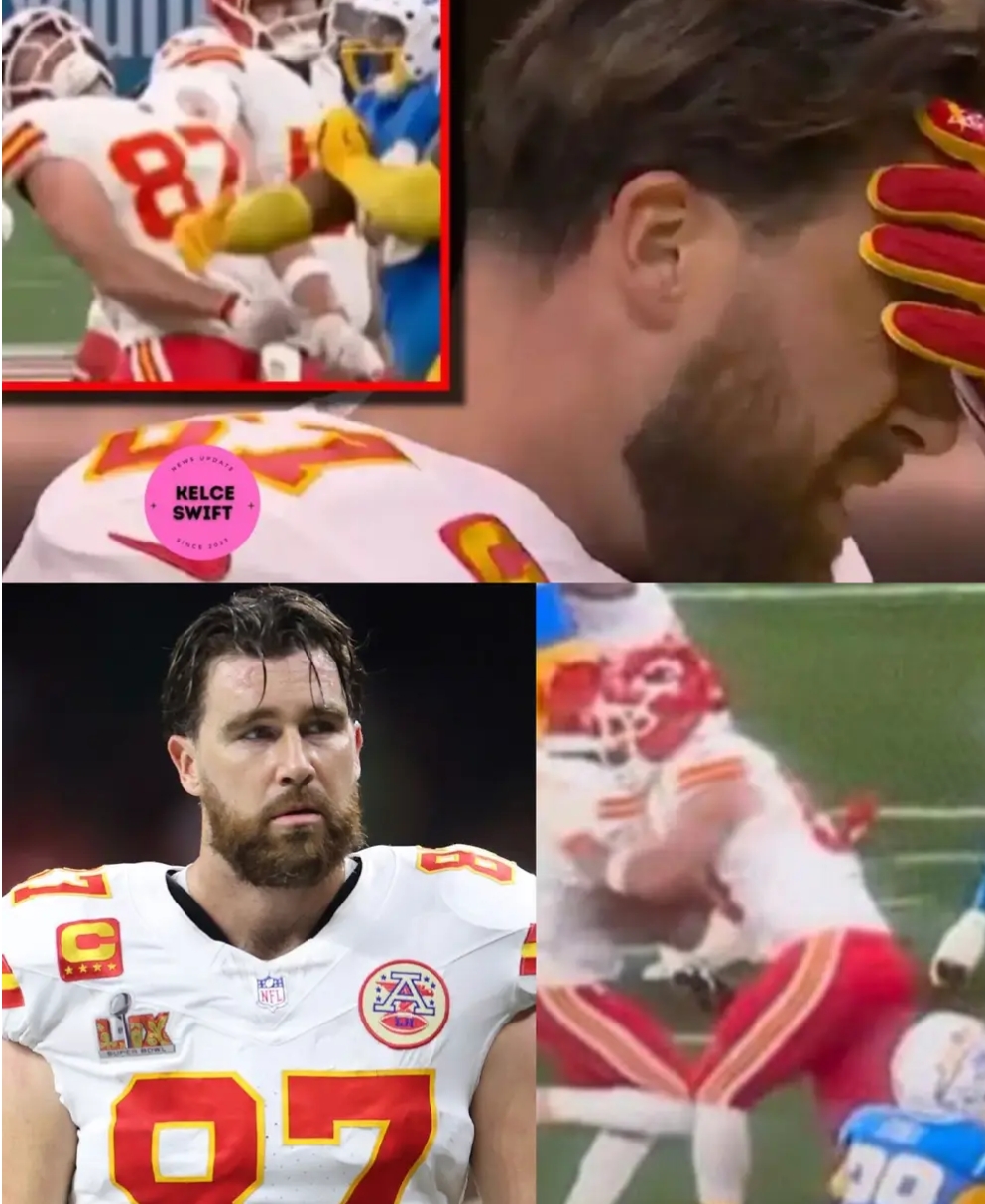CELEBRITY
The Slap, The Flag, and The Fury: Inside the On-Field Eruption That Exposed a Glaring NFL Loophole

In the brutal, high-stakes ballet of professional football, the line between controlled aggression and chaotic violence is razor-thin. For a few heart-stopping seconds during an otherwise routine third-quarter play, that line was not just crossed; it was obliterated. The incident involved two powerful men: Kansas City Chiefs’ superstar tight end Travis Kelce and Los Angeles Chargers’ formidable defensive lineman, Teair Tart. It began with a shove and ended with a shocking slap to the helmet, but the true drama unfolded in the aftermath—with a referee’s decision that has since ignited a firestorm of debate across the league.
The game was at a tense juncture. Every yard was a battle, every tackle a statement. Following a short two-yard run, the whistle blew, signaling the end of the play. But the aggression did not cease. In a moment of frustration, Kelce, a player known for his passionate and sometimes fiery demeanor, gave Tart a forceful shove. It was a common, albeit illegal, display of post-play animosity, the kind of thing that typically earns a few angry words or a separating gesture from an official.
Tart’s response, however, was anything but common. Instead of shouting back or returning the shove, he retaliated with stunning speed and violence. He swung his arm and brought his open hand down with incredible force, slapping the front of Kelce’s helmet. The crack of the impact was audible, a sharp, jarring sound that cut through the stadium’s roar. For a moment, Kelce was frozen in disbelief, his hands flying up in a universal gesture of “What was that?” He was shocked, not just by the act itself, but by its audacity.
Immediately, a yellow flag flew from the pocket of a nearby referee, soaring through the air to land on the turf as a symbol of broken rules. Teammates from both sides began to converge, the potential for a full-scale brawl hanging heavy in the air before officials stepped in to restore order. The call was announced to the anxious crowd: a 15-yard unnecessary roughness penalty against Teair Tart. Justice, it seemed, had been served. But as Tart remained on the field, preparing for the next play, a wave of confusion and outrage began to ripple through the broadcast booths, the stands, and across social media. Why wasn’t he ejected?
In the world of the NFL, striking an opponent in the head is one of the most cardinal sins. The league, under immense pressure to address player safety and the long-term effects of head trauma, has implemented strict rules to discourage such actions. A punch to the helmet, for instance, almost always results in an immediate disqualification. So why was Tart’s blatant, televised slap treated differently?
The answer, as it turns out, lies in a subtle but critical distinction within the NFL’s complex rulebook. As the broadcast replayed the shocking incident, rules analyst Terry McCaulay was quick to provide context. He explained that the officiating crew’s decision hinged entirely on the specific nature of the contact. It wasn’t a matter of intent or force, but of anatomy: was it a closed fist or an open hand?
Travis Kelce Sighs Leaving the Field After Loss in 2025 Super Bowl
Fellow officiating and rules analyst Wald Anderson later provided the definitive explanation that has become the crux of the controversy. The act was ruled as “open hand contact to the head.” While still a clear violation worthy of a significant penalty, it did not, according to the letter of the law, meet the league’s threshold for a disqualifying action. Had Tart’s fist been clenched, he would have been walking back to the locker room. Because his hand was open, he was allowed to stay in the game.
This ruling has exposed a potential loophole in the NFL’s disciplinary code, one that many feel violates the spirit of the rule, which is to protect players from deliberate head contact. The open-hand slap, while perhaps less likely to cause a concussion than a punch from a gloved fist, is still a violent, unsportsmanlike act designed to intimidate and provoke. It sends a message that a player can forcefully strike an opponent’s head and face a consequence no more severe than a loss of yardage.
The incident forces a deeper look at the psychology of these elite athletes. Travis Kelce’s initial shove was born of the frustration inherent in a physically demanding and emotionally charged contest. While against the rules, it is a part of the game’s aggressive culture. Tart’s reaction, however, represents a significant escalation—a loss of composure that endangered an opponent and disrespected the game. For players who are trained to channel their aggression into productive, strategic action, this moment was a raw display of it boiling over without restraint.
The fallout continues to be debated. Was the 15-yard penalty a sufficient deterrent? Or does the league need to amend its rules to ensure any deliberate strike to the head, open hand or not, is met with the harshest possible on-field punishment? Critics argue that by allowing Tart to remain in the game, the NFL sent a dangerous message: that there is an acceptable level of head-directed violence, so long as you follow a technicality. For a league that claims player safety is its top priority, this incident stands as a powerful and troubling contradiction. It was a moment of madness that, thanks to a fine-print rule, was met with a mere slap on the wrist.












